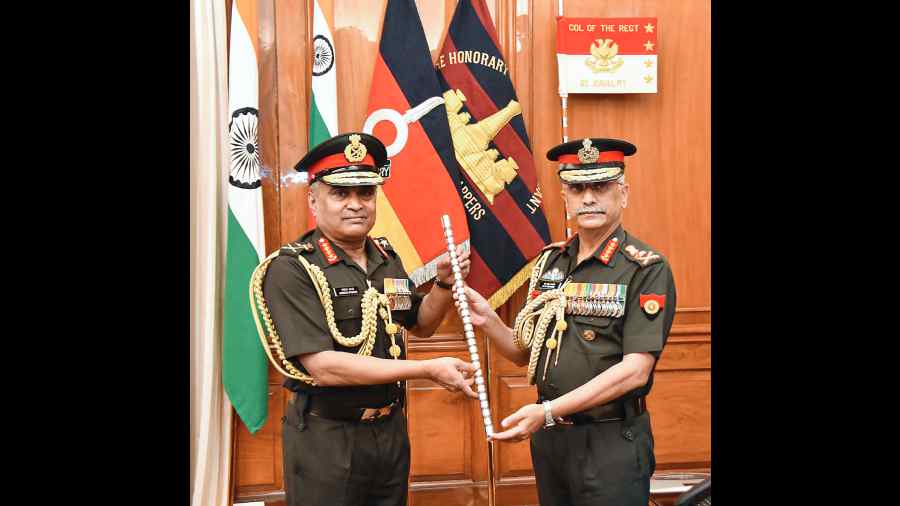General Manoj Pande on Saturday took charge as India’s new Chief of Army Staff, but military veterans and sources in the defence establishment expressed disappointment that the post of Chief of Defence Staff (CDS) continued to remain vacant.
Pande succeeds General M.M. Naravane, whom many had expected to be appointed the new CDS as soon as he retired since he was the senior-most among the three service chiefs.
Defence ministry sources said having a CDS — a post vacant for four months — was crucial at a time India faced security threats along its northern (China) and western (Pakistan) frontiers.
“The biggest threat now is the possibility of a two-front war. It’s still not clear, though, when the government might appoint a CDS,” a defence ministry official said.
An army official said: “We need a new CDS: the sooner the better.”
The country’s first CDS, General Bipin Rawat, died in a chopper crash last December.
The CDS functions as principal military adviser to the Prime Minister and the defence minister on matters including the nuclear command.
“Succession plans are an integral and important part of defence services. There has never before been such delay in filling a top military post. What’s the government waiting for? This is increasingly looking like a political decision rather than a military one,” a military veteran told The Telegraph.
Sources in the security establishment said the absence of a CDS was also delaying the government’s proposal to create five geographical theatre commands — each with its own army, navy and air force units, working as a single entity under an operational commander.
Rawat had spearheaded the theaterisation drive, aimed at achieving synergy among the tri-services chiefs to deal with security challenges and future wars.
At present, India’s armed forces have 17 service commands, each assigned exclusively to one of the three forces. The army and the air force have seven commands each while the navy has three.
The air force is said to have apprehensions about the theaterisation plan because of its limited resources compared with the army’s. The air force does not want to split its assets, which are fewer than the army’s.
The air force is believed to have contended that the nature of its operations is so fluid that the whole of India is one theatre for it. It is also said to have issues over who would lead the theatres, amid fears that the army would take up the senior positions.
The army favours theaterisation, arguing that multiple commands lead to confusion. The army has cited the example of China, which has a single western theatre command for the entire Indian frontier.
India’s army alone has four commands on the China frontier — northern, western (which mainly looks after the Pakistan front), central and eastern. The IAF has three commands on the China frontier.
Pande is the 29th army chief, and is the first officer from the Corps of Engineers to helm the force. Before taking charge as army vice-chief on February 1, he headed the Eastern Command, one of whose tasks is to guard the Line of Actual Control in Sikkim and Arunachal Pradesh.










